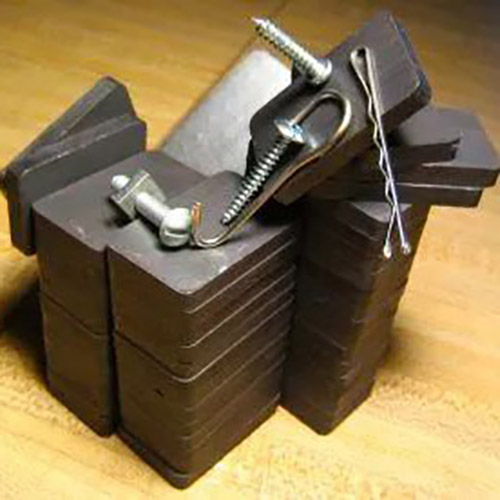Are ferrite magnets the strongest magnets available?
2024-09-17

Are Ferrite Magnets the Strongest Magnets Available?
This is a common question asked by people who are not familiar with the different types of magnets available. The answer is no, Ferrite Magnets are not the strongest magnets available. There are other types of magnets, such as Neodymium Magnets, which are significantly stronger and have a higher magnetic energy product.What is the Difference Between Ferrite Magnets and Neodymium Magnets?
The main difference between these two types of magnets is their strength. Neodymium Magnets are significantly stronger than Ferrite Magnets and have a higher magnetic energy product. Ferrite Magnets, on the other hand, are more cost-effective and have a higher resistance to demagnetization.What are the Advantages of Using Ferrite Magnets?
Ferrite Magnets are highly cost-effective, making them a popular choice in various industrial and commercial applications. They also have a higher resistance to demagnetization and remain magnetic for a long time, making them an ideal choice for applications that require a long-lasting magnet.What are the Disadvantages of Using Ferrite Magnets?
One of the main disadvantages of using Ferrite Magnets is their lower magnetic strength compared to other types of magnets, such as Neodymium Magnets. They also tend to be more brittle and can break or shatter if dropped or exposed to impact. In conclusion, Ferrite Magnets are a cost-effective option for various electronic devices and industrial applications. While they are not the strongest magnets available, they have a high resistance to demagnetization and remain magnetic for a long time.At Ningbo New-Mag magnetics Co.,Ltd, we specialize in the manufacturing and supply of high-quality magnets, including Ferrite Magnets. Our magnets are made using the latest technology and are designed to meet the specific needs of our clients. Visit our website at https://www.new-magnets.com to learn more about our products and services. For any inquiries, you can email us at master@news-magnet.com.
Research Papers on Ferrite Magnets
1. Chen, H., & Zhu, J. (2009). Ferrite magnet performance and applications. Rare Metals, 28(2), 127-133.
2. Tong, S., Hu, X., Wu, G., Chen, W., & Jia, B. (2014). Preparation and characterization of ferrite magnetic nanoparticles for biomedical applications. Journal of magnetism and magnetic materials, 358, 135-139.
3. Cheng, D., Han, B., Li, Y., Yu, X., Zhang, Y., & Liu, J. (2016). Magnetic and microwave absorption properties of Ni 0.5 Zn 0.5 Fe 2 O 4 ferrite nanoparticles. Journal of magnetism and magnetic materials, 409, 157-161.
4. Chen, Z., Yan, G., & Zhu, F. (2019). Magnetic noise suppression for current sensor based on the ferrite-damped magnetic material. Journal of magnetism and magnetic materials, 481, 219-225.
5. Chen, G., Wu, J., Zhang, H., Dai, Y., & Guo, Y. (2018). Fabrication and properties of ferrite magnetic films for high frequency power inductors. Journal of magnetism and magnetic materials, 446, 50-54.
6. Wang, J., & Liu, D. (2018). Ferrite-based electromagnetic materials. Advances in applied ceramics, 117(5-6), 314-322.
7. Tu, Z., Zhang, C., Dong, Y., Deng, C., & Li, H. (2020). Synthesis and investigation of the magnetic properties of NiFe2O4 ferrite. Journal of magnetism and magnetic materials, 498, 166034.
8. Wang, T., & Wang, J. (2016). Effect of microstructure on magnetic properties of ferrite magnetic materials. Advances in applied ceramics, 115(4), 215-223.
9. Yang, H., Wang, Y., Yu, L., Li, J., & Zhang, J. (2017). Synthesis and magnetic properties of Ni 0.5 Zn 0.5 Fe 2 O 4 ferrite nanoparticles. Journal of magnetism and magnetic materials, 441, 347-351.
10. Wu, H., Li, M., Weng, X., Cao, R., Huang, S., & Chen, L. (2019). Synthesis and characterization of NiZn ferrite magnetic nanoparticles for thermal conductivity enhancement of paraffin wax based nanofluids. Ceramics International, 45(2), 1945-1950.


